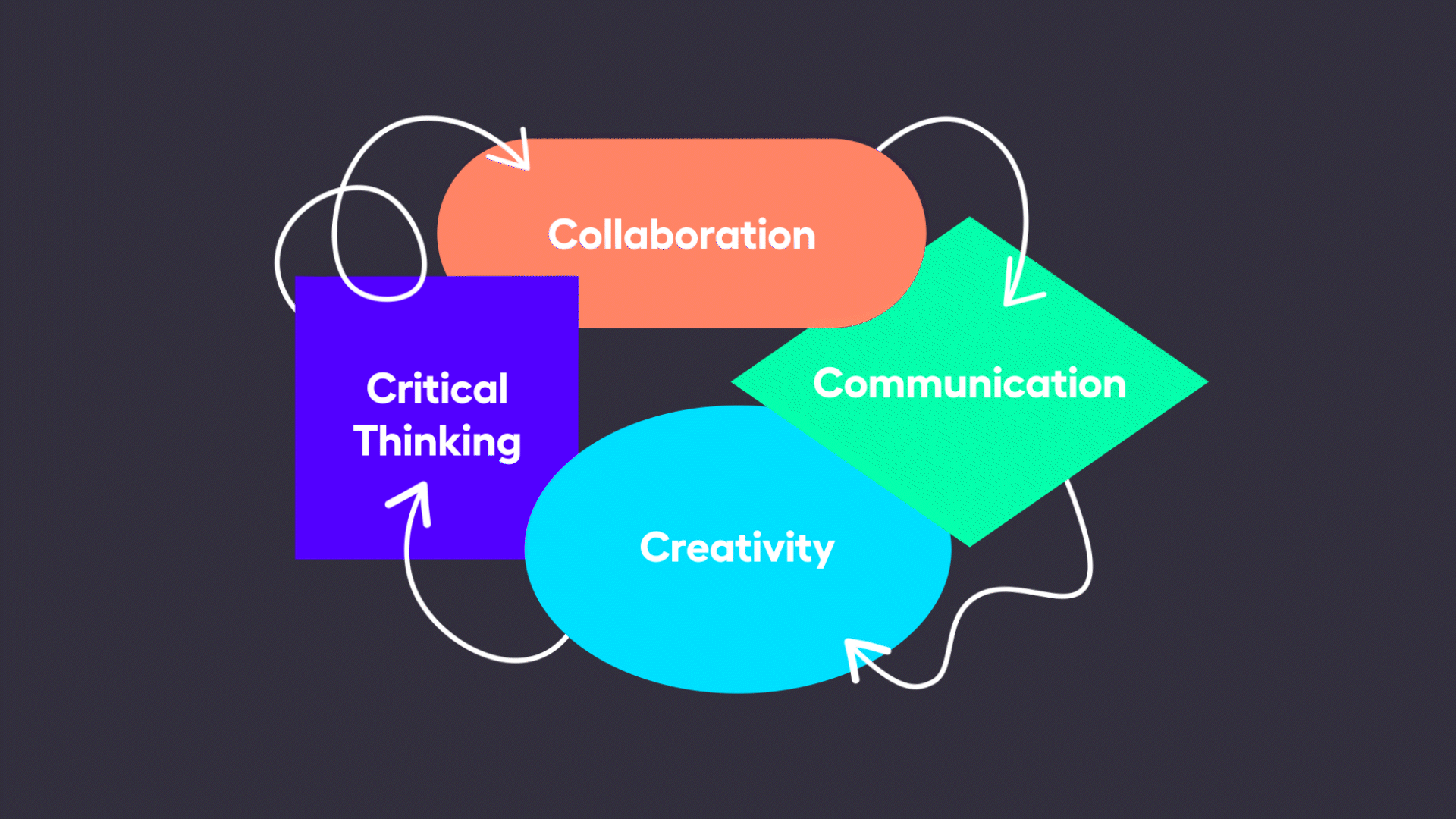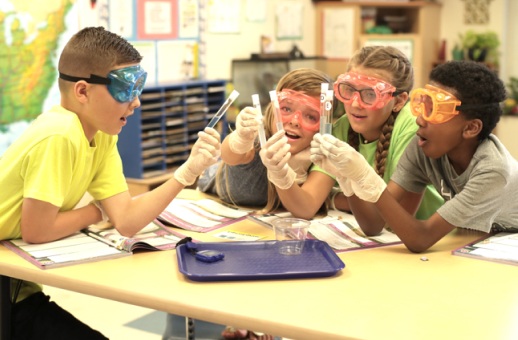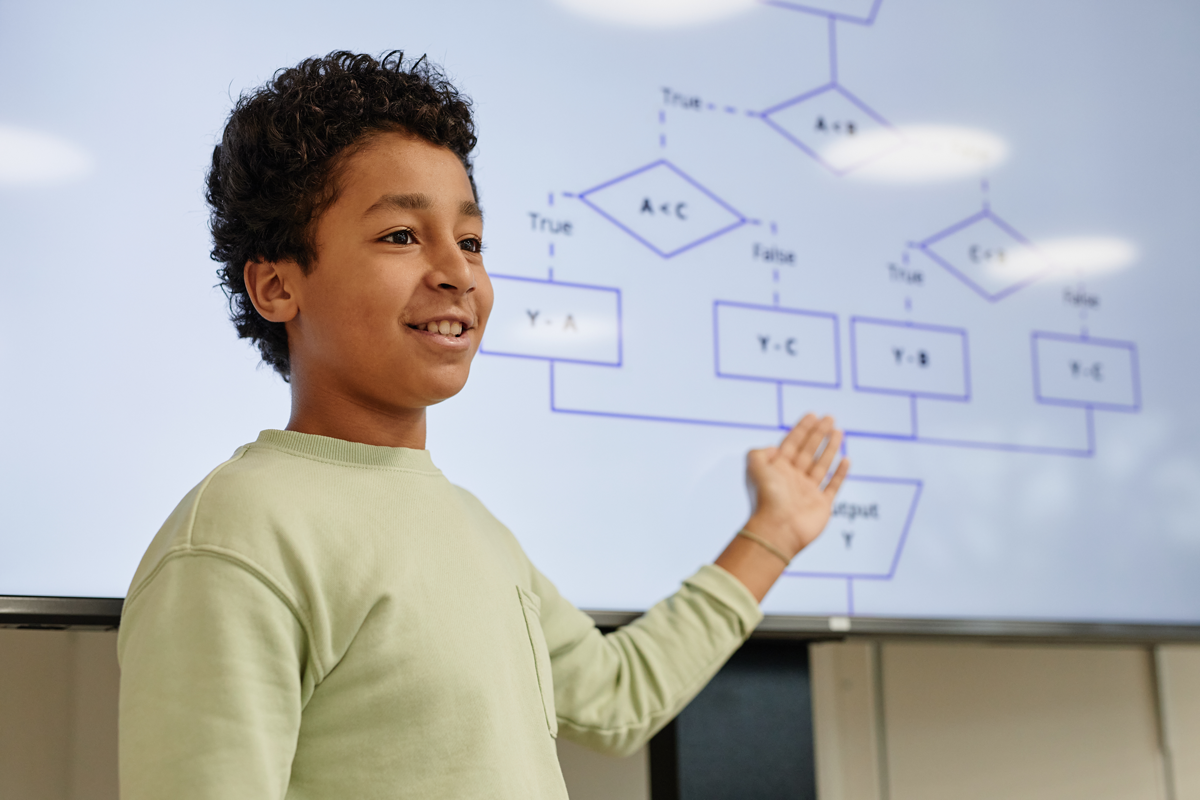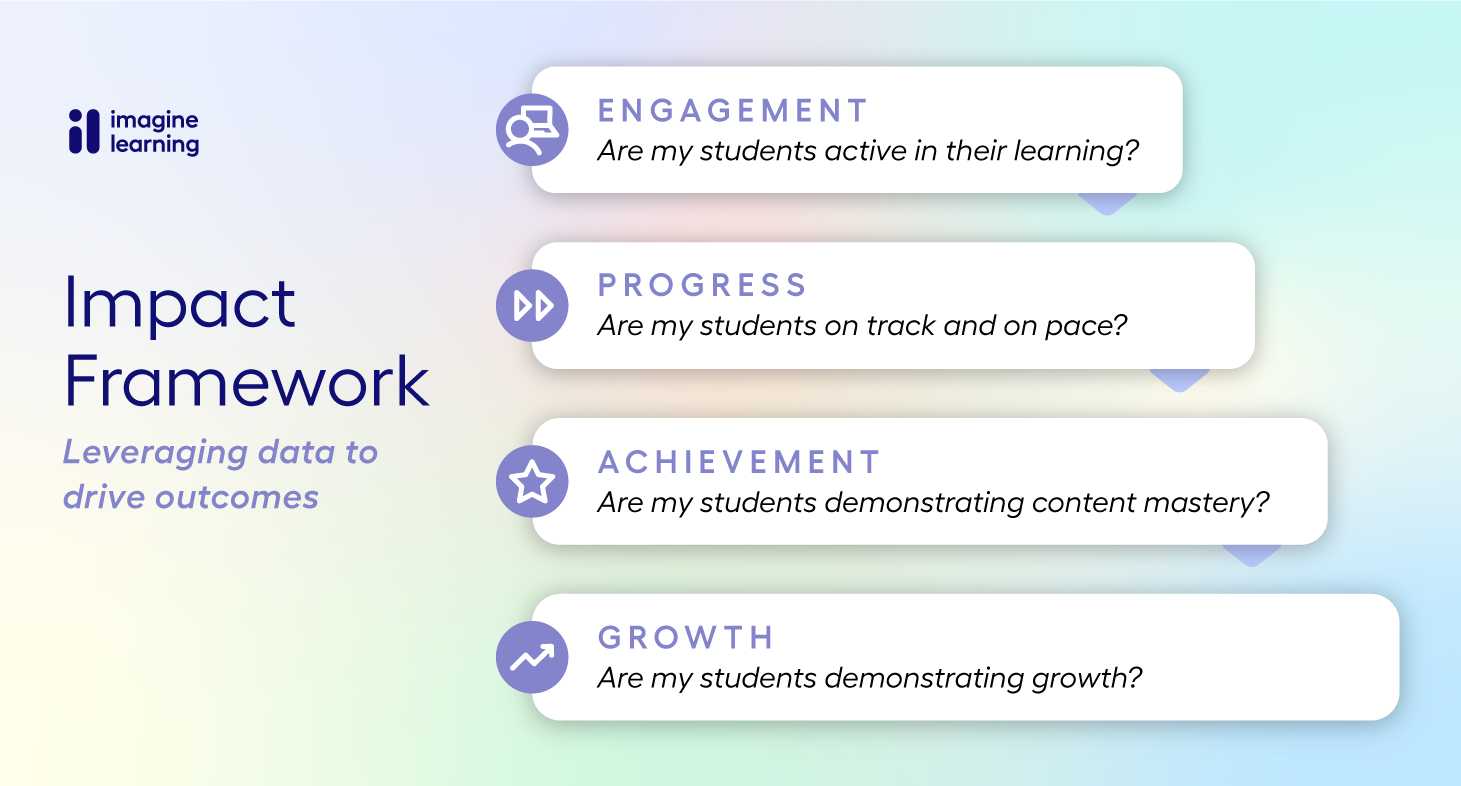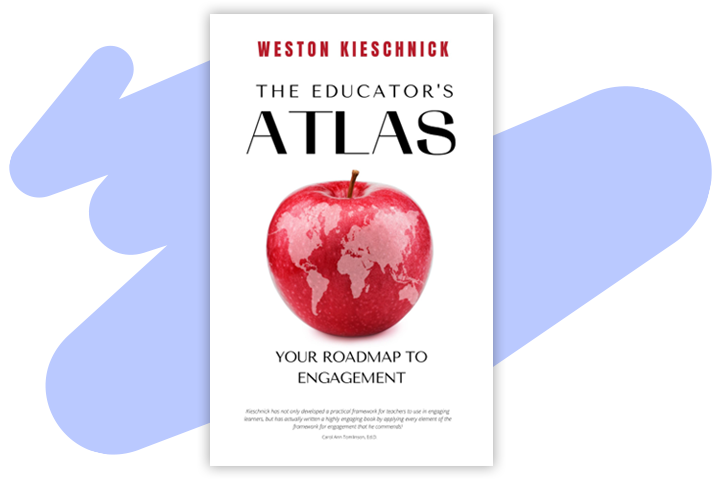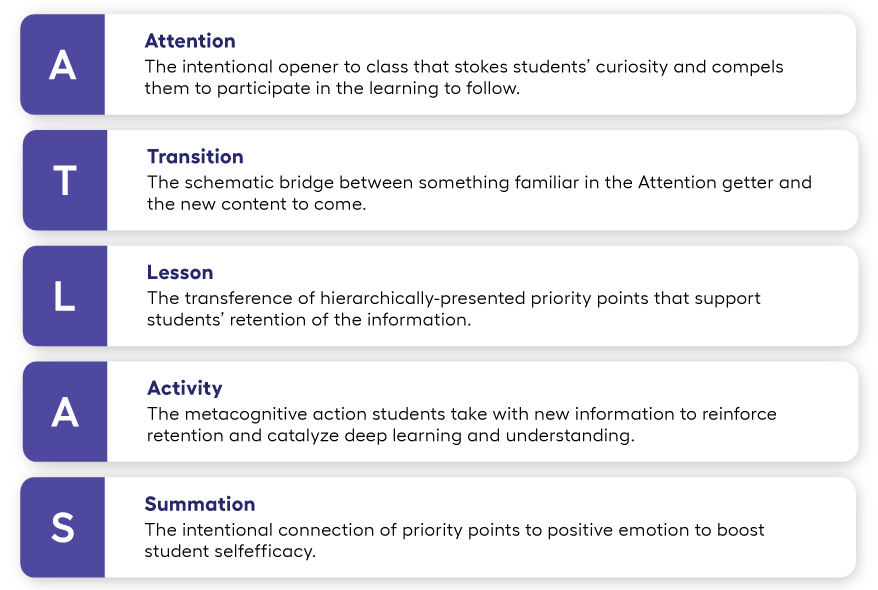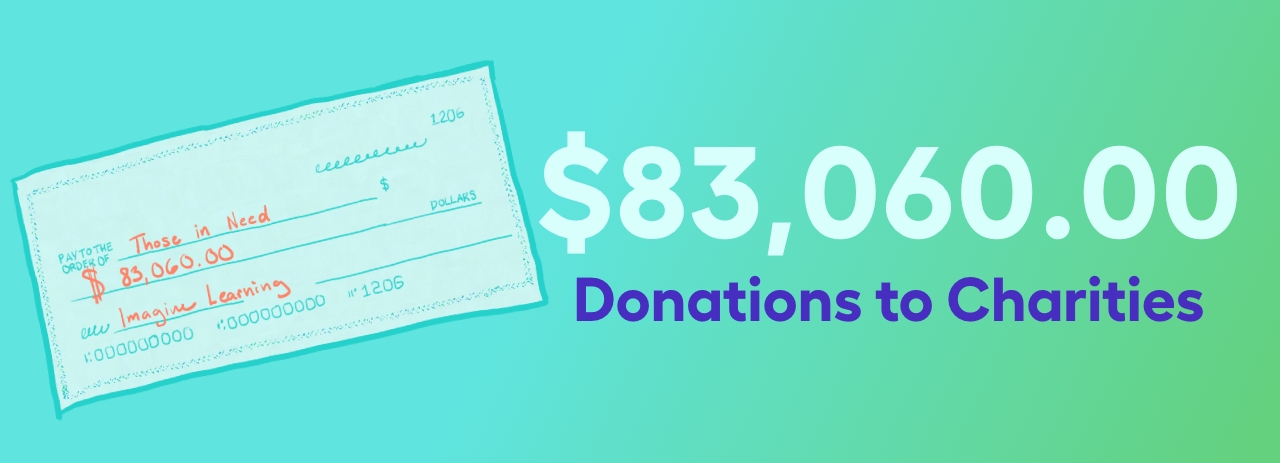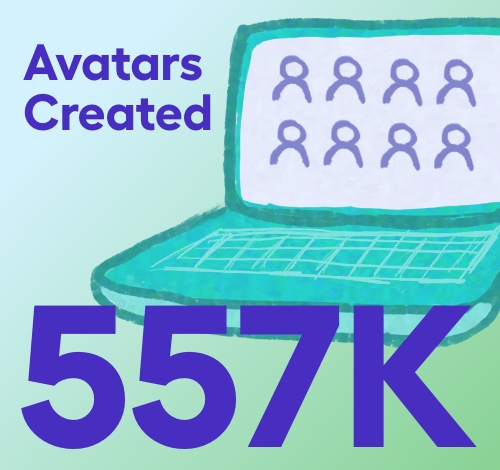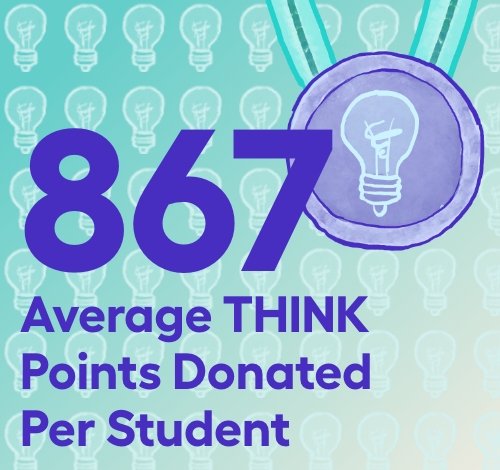Trusting us with your students — and keeping their best interests at heart — is a privilege that we don’t take lightly. You want to know that when students log in to one of our programs, they’re receiving the absolute best instruction and an equitable user experience. Most of all, you want to know that it works.
We share each educator’s mission to foster student growth.
Still, when we say we create dynamic, student-centered digital curricula, what exactly do we mean? Here are four ways we design for students: it starts with research (efficacy and foundational), we take the time to talk to students and teachers like you and incorporate feedback, we prioritize equity, and we’re always searching for ways to better engage students in their learning. This way, when you’re using one of our programs, you can focus on what you do best: connecting with students and, you know, teaching.
1. It starts with a strong foundation in research
Our research team at Imagine Learning geeks out on a wide body of peer-reviewed research. So, you can know that when students complete lessons, they’re going to receive instruction steeped in what works. Two types of research are incorporated: foundational (what we build our products on), and efficacy (how we measure the effectiveness of what we’ve created).
Foundational Research
Imagine Learning incorporates well-accepted research into its work at every opportunity, drawing from a wide range of inquiry and analysis to inform the instructional design of our solutions and ignite learning breakthroughs.
Let’s take a quick look at how this works for one of our products, Imagine Math. We know conceptual understanding is critical for math success… but what method of instruction supports this best? Dr. Heather West, the Principal Foundational Research Specialist at Imagine Learning shares, “To effectively support students’ conceptual understanding of mathematics, it is important that we draw on research to determine what students need to learn to master grade-level content and how to best teach these concepts. Our Imagine Math lessons incorporate the concrete-representational-abstract framework to help students make meaning of the concept, make connections across representations, and understand the underlying concepts behind the procedures.”
Additionally, research has found that students who are intrinsically motivated perform at higher levels (Lemos & Verissimo, 2014; Skaalvik et al., 2015), are more inclined to persevere when faced with challenges (Huang, 2011), and develop a deeper understanding of content (Zainuddin et al., 2020). Therefore, Imagine Math aims to intrinsically motivate students by incorporating real-world situations that are interesting and relatable. These lessons also encourage choice and promote self-directed learning by encouraging them to choose from a variety of reward environments and skills-based games.
Discover how we translate critical research into smart instructional design for all or our products to propel learning outcomes for students.
Efficacy Research
We continuously measure the impact our programs have on student success and school communities. “Our evaluative studies,” said Andrew Berrett, PhD, Director of Efficacy Research at Imagine Learning, “are designed to meet the level of research rigor required by the Every Student Succeeds Act (2016) in demonstrating evidence of effectiveness for a diverse population of students across the nation. Insights obtained from these studies are used to inform the instructional design of our solutions and ignite learning breakthroughs.”
Here are a few recent examples:
Credit Recovery Students Using Edgenuity Recover 26 Percent More Credits and Graduate at a Higher Rate than Their Peers: A research brief showing how Cypress-Fairbanks Independent School District students enrolled in Imagine Edgenuity’s online English I, English II, Algebra I, U.S. History, and Biology credit recovery courses obtained more credits and achieved higher course grades than an equivalent group of students enrolled in a face-to-face credit recovery course.
An Evaluation of the Effectiveness of Language & Literacy for Improving Reading Skills: An independent research study that shows how fourth- and fifth-grade students who used Imagine Language & Literacy showed significantly more growth in reading skills than comparable students who did not use Imagine Learning.
You can browse the entire library of efficacy research here.
2. The most important feedback comes from students (and teachers!)
Real students give us real feedback, and their reactions and opinions are integrated into design choices such as minimizing distractions on the page, the addition of micro-celebrations and opportunities to motivate students, and more.
Once we’ve got a prototype of a desired program, or updates to an existing one, Imagine Learning’s Product Experience Design team form a test group of students (and educators!) that use the product for a set amount of time. There are two main questions the team asks when doing user research. First, can they design for specific students’ needs and wants? Empathy is the keyword here. Our products should be designed with empathy for what both educators and students want and need.
The second question they keep in mind is, do our ideas translate into something meaningful for students and teachers?
“We want to test specific aspects of our designs or ideas and understand whether or not they actually work for users,” said Imagine Learning user experience researcher, Michael Richard. “I think it’s the Hippocratic oath — which is ‘do no harm.’ If you are trying to build something new and exciting and interesting, you also have to evaluate whether or not students and instructors are able to effectively accomplish the tasks that you think are critical. Because you can make something beautiful but if nobody understands how to use it, that’s kind of a huge problem.”
3. Diversity, equity, and inclusion are important
Diversity and inclusivity strengthen our team, enrich our lives, and help us better serve our students with materials in which they not only see themselves reflected but also learn about diverse people, cultures, experiences, and perspectives. Our materials fit into practices like Culturally and Linguistically Sustaining Teaching and Universal Design for Learning – where each student’s unique learning journey is valued.
Here are the principles we follow when creating content:
Inclusion: Create content reflective of our users so that students see themselves, their family members, and their communities in the content.
Representation: Show people and groups the way they want to be shown via terminology, visual and cultural representations, and more.
Perspective: Include more diversity of perspectives to create more complete and accurate materials, including centering of viewpoints outside of the dominant culture.
Accuracy: Be fact-based, provide context, and talk about impacts.
A quick example of this can be found in Imagine Math, which promotes learning through lovable characters, songs, and stories. The characters are intentionally designed to be culturally inclusive and to inspire students to dream big. STEM-driven careers are highlighted throughout the narrative; Ruby wants to be an engineer when she grows up, Maya is a scientist in the making, Oliver likes to build robots, and Sophia is on her way to becoming a doctor. The narration fosters feelings of relatedness and inclusivity between students and Imagine Math’s friendly characters.
Another example of diversity in our products can be found in Imagine Español, a K-5 Spanish Language Arts curriculum:
